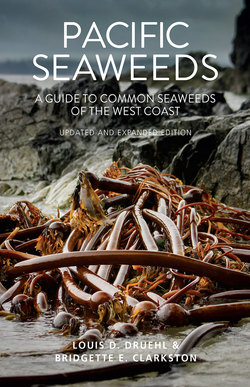Читать книгу Pacific Seaweeds - Louis Druehl - Страница 72
На сайте Литреса книга снята с продажи.
Оглавление72 | Unicellular forms
Pacific Seaweeds
Molly Letsch (Le Moyne College) used genetic analysis during her doc-toral studies to determine that the green algal symbionts, formerly referred to as “Chlorella-like” (Greek=green and small), were a new species, which she named Elliptochloris marina.
Habitat & Distribution
Species of anemones in the genus Anthopleura are abundant on rocks, in tide pools or crevices and on pier pilings. They are characteristic of the mid-dle intertidal zones of semi-protected rocky shores of both bays and outer coasts. Distribution is from Alaska to Mexico.
‘Codiolum’ / ‘Chlorochytrium’
Class Chlorophyta Order variable Family variable
Number of Species
‘Codiolum’ (Greek=little ball) and ‘Chlorochytrium’ (Greek=little green fungus) are two unicellular forms once considered to be distinct from other green algae (hence their former names Codiolum and Chlorochytrium). We now know them to be the spore-producing phase of several filamentous and bladed green seaweeds (examples are Urospora, p. 53, and Acrosiphonia, p. 55).
The giant green anemone (Anthopleura xanthogrammica) in which the unicellular Elliptochloris sp. resides.
